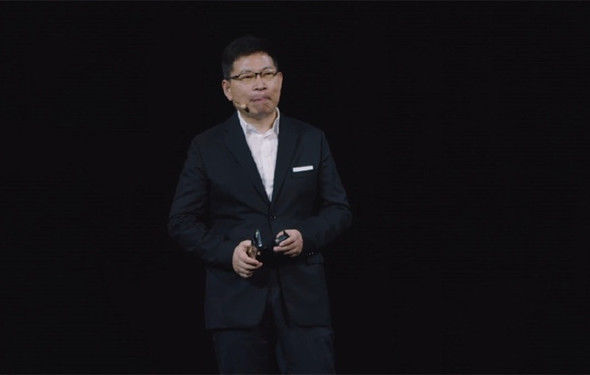ReactorеҚ•зәҝзЁӢжЁЎеһӢиҜҰи§ЈдёҺе®һзҺ°
ReactorеҚ•зәҝзЁӢжЁЎеһӢиҜҰи§Ј
- зӣ®еҪ•
-
- ReactorжЁЎејҸеҺҹзҗҶ
- Reactorе®һзҺ°
- жҖ»з»“
зӣ®еҪ• ReactorжЁЎејҸеҺҹзҗҶ гҖҗReactorеҚ•зәҝзЁӢжЁЎеһӢиҜҰи§ЈдёҺе®һзҺ°гҖ‘1.еҺҹзҗҶиҜҙжҳҺ
1.ReactorжЁЎеһӢжҳҜзӣёеҜ№дј з»ҹIOжңәжһ„жқҘиҜҙзҡ„,д№ҹе°ұжҳҜNIOжЁЎеһӢ, NIOжЁЎеһӢд№ӢжүҖд»ҘеҸҜд»ҘдјҳеҢ–,еҫ—зӣҠдәҺ
е®ғжҳҜеҹәдәҺдәӢ件,еҹәдәҺејӮжӯҘ,дёҚеғҸдј з»ҹIO,жҳҜйҳ»еЎһзҡ„,еҫҲйҡҫеҒҡжһ¶жһ„дёҠзҡ„ж”№еҸҳ
2.ReactorжЁЎеһӢеҲҶдёәеҮ дёӘ组件,еҲҶеҲ«жҳҜReactor,Acceptor,Handler
3.Reactor组件иҙҹиҙЈеҲҶеҸ‘дәӢ件,еҰӮжһңжҳҜиҝһжҺҘ,йӮЈд№ҲдәӨз»ҷAcceptor,еҰӮжһңжҳҜиҜ»еҶҷдәӢ件,йӮЈд№ҲдәӨз»ҷHandler
4.AcceptorиҙҹиҙЈеӨ„зҗҶиҝһжҺҘдәӢ件(иҺ·еҸ–ж–°иҝһжҺҘ,жіЁеҶҢеҲ°SelectorдёҠ,жіЁеҶҢиҜ»еҶҷдәӢ件,з»‘е®ҡHandler)
5.HandlerиҙҹиҙЈеӨ„зҗҶиҜ»еҶҷдәӢ件(дҪҝз”ЁchannelиҝӣиЎҢиҜ»еҶҷ)
Reactorе®һзҺ°
package com.example.nio.netty;
import java.io.IOException;
import java.net.InetSocketAddress;
import java.nio.ByteBuffer;
import java.nio.channels.SelectionKey;
import java.nio.channels.Selector;
import java.nio.channels.ServerSocketChannel;
import java.nio.channels.SocketChannel;
import java.util.Iterator;
import java.util.Set;
/**
* еҚ•ReactorеҚ•зәҝзЁӢжЁЎеһӢ
*/
class ReactorModel1 {private Reactor reactor;
private Integer port;
public ReactorModel1(Integer port) throws IOException {this.port = port;
this.reactor=new Reactor(port);
}public void start(){Thread thread = new Thread(this.reactor);
thread.start();
}}/**
* 组件Reactor(дәӢ件еҲҶеҸ‘)
*/
class Reactor implements Runnable{/**
* з«ҜеҸЈ
*/
private Integer prot;
/**
* з”ЁдәҺжҺҘеҸ—иҝһжҺҘзҡ„ServerChannel
*/
private ServerSocketChannel serverSocketChannel;
/**
* з®ЎзҗҶиҝһжҺҘзҡ„йҖүжӢ©еҷЁ
*/
private Selector selector;
public Reactor(Integer prot) throws IOException {this.prot = prot;
this.serverSocketChannel = ServerSocketChannel.open();
this.selector = Selector.open();
//з»‘е®ҡз«ҜеҸЈ
this.serverSocketChannel.bind(new InetSocketAddress(prot));
//и®ҫзҪ®дёәйқһйҳ»еЎһ
this.serverSocketChannel.configureBlocking(false);
//жіЁеҶҢеҲ°йҖүжӢ©еҷЁдёҠйқў
this.serverSocketChannel.register(selector, SelectionKey.OP_ACCEPT);
}@Override
public void run() {while (true){try {int select = selector.select();
Set> selectionKeys = selector.selectedKeys();
Iterator> iterator = selectionKeys.iterator();
while (iterator.hasNext()) {SelectionKey selectionKey = iterator.next();
//еҲҶеҸ‘дәӢ件
dispatch(selectionKey);
iterator.remove();
}
} catch (IOException e) {e.printStackTrace();
}
}}/**
* иҝӣиЎҢдәӢ件еҲҶеҸ‘
* @param selectionKey
*/
private void dispatch(SelectionKey selectionKey){if (selectionKey.isAcceptable()) {//иҝһжҺҘдәӢ件
new Acceptor(serverSocketChannel,selector).run();
} else{//иҜ»еҶҷдәӢ件
new Handler(selectionKey).run();
}}}/**
* accepor(еӨ„зҗҶиҜ»еҶҷ)
*/
class Acceptor implements Runnable{/**
* з”ЁдәҺжҺҘеҸ—иҝһжҺҘзҡ„ServerChannel
*/
private ServerSocketChannel serverSocketChannel;
/**
* з®ЎзҗҶиҝһжҺҘзҡ„йҖүжӢ©еҷЁ
*/
private Selector selector;
public Acceptor(ServerSocketChannel serverSocketChannel, Selector selector) {this.serverSocketChannel = serverSocketChannel;
this.selector = selector;
}@Override
public void run() {//serverSocketChannelзҡ„иҝһжҺҘдәӢ件
SocketChannel accept = null;
try {accept = this.serverSocketChannel.accept();
//и®ҫзҪ®дёәйқһйҳ»еЎһ
accept.configureBlocking(false);
//жіЁеҶҢеҲ°selector, жіЁеҶҢиҜ»еҶҷдәӢ件
accept.register(selector,SelectionKey.OP_READ | SelectionKey.OP_WRITE);
System.out.println("ж–°иҝһжҺҘ:"+accept.getRemoteAddress());
} catch (IOException e) {e.printStackTrace();
}}
}class Handler implements Runnable{private SelectionKey selectionKey;
public Handler(SelectionKey selectionKey) {this.selectionKey = selectionKey;
}@Override
public void run() {try {if(selectionKey.isReadable()){//иҜ»дәӢ件еӨ„зҗҶ
this.read();
}else {//еҶҷдәӢ件еӨ„зҗҶ
this.write();
}
}catch (Exception e){}}/**
* еӨ„зҗҶиҜ»дәӢ件
* @throws IOException
*/
private void read() throws IOException {SocketChannel channel = (SocketChannel) selectionKey.channel();
ByteBuffer allocate = ByteBuffer.allocate(1024);
int read = channel.read(allocate);
if(read>0) {System.out.println("жҺҘ收еҲ°ж¶ҲжҒҜ:" + new String(allocate.array(), 0,read));
}
}/**
* еӨ„зҗҶеҶҷдәӢ件
* @throws IOException
*/
private void write() throws IOException {}
}
жҖ»з»“ еҚ•ReactorеҚ•зәҝзЁӢжЁЎејҸиҷҪ然еңЁжһ¶жһ„дёҠеҢәеҲҶдәҶ组件, ReactorиҙҹиҙЈдәӢ件еҲҶеҸ‘,AcceptorиҙҹиҙЈеӨ„зҗҶжҺҘеҸ—ж–°иҝһжҺҘдәӢ件,HandleиҙҹиҙЈиҜ»еҶҷдәӢ件еӨ„зҗҶ, дҪҶжҳҜжҖ»дҪ“дёҠжқҘзңӢ,иҝҳжҳҜдёҖдёӘReactorзәҝзЁӢеӨ„зҗҶ,еҫҲе®№жҳ“дә§з”ҹж•…йҡң,иҖҢдё”дёҖдёӘзәҝзЁӢеӨ„зҗҶд№ҹжҳҜжңүйҷҗзҡ„. дҪҶжҳҜReactor,Acceptor,HandleйғҪе®һзҺ°дәҶRunnableжҺҘеҸЈ,еҚ•зӢ¬жҠҪзҰ»еҮәжқҘжҲҗдёәдёҖдёӘ组件,жҲ‘们еҸҜд»ҘеҹәдәҺзәҝзЁӢжұ ж— йҷҗжү©еұ•,иҝҷиҝҳеҫ—еҫ—зӣҠдәҺNIOжҳҜеҹәдәҺдәӢ件(дёҖдёӘSelectorе“Қеә”еӨҡдёӘChannelзҡ„дәӢ件), дёҚеғҸBIOжҳҜйҳ»еЎһ,ж— жі•еҚ•зӢ¬жҠҪзҰ»,д№ҹе°ұжү©еұ•иө·жқҘеҫҲйҡҫ.
жҺЁиҚҗйҳ…иҜ»
- 科еӯҰе…»иғғпјҢеҲ«иў«еҝҪжӮ пјҢе…¶е®һзңҹзҡ„еҫҲз®ҖеҚ•
- opencv|opencv C++жЁЎжқҝеҢ№й…Қзҡ„з®ҖеҚ•е®һзҺ°
- еҚ•зӮ№зҷ»йҷҶ
- жқҫиҪҜеҸҜеҸЈжҳ“ж¶ҲеҢ–пјҢж— йңҖзғӨз®ұи¶…з®ҖеҚ•пјҢж–°жүӢйә»йә»д№ҹиғҪиҪ»жқҫжҲҗеҠҹ~
- еҸӢжғ…зҡ„ејҖе§Ӣ
- гҖҗиҜ»д№Ұжё…еҚ•20гҖ‘еҶҷдҪңеҗ§пјҒдҪ еҖјеҫ—иў«зңӢи§Ғ(2)
- дҪ еҚ•иә«еӨҡд№…дәҶпјҲпјү
- з®ҖеҚ•еҝғзҗҶ2019жҳҘAжңҹ+32+еј иҚЈ
- д»ҘеӨӘеқҠдёӯзҡ„и®ЎйҮҸеҚ•дҪҚеҸҠзӣёдә’иҪ¬жҚў
- еҰӮжһңдҪ жҳҜеҚ•зңјзҡ®еҰ№еӯҗпјҢиҝҷж”Ҝзңјзәҝ笔дҪ еҫ—收дәҶгҖӮ










